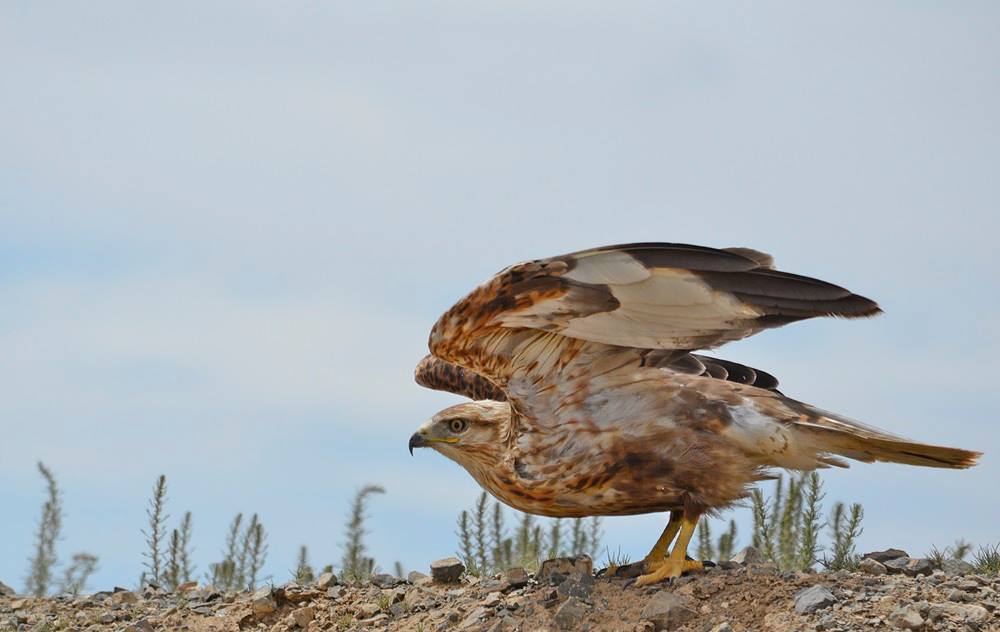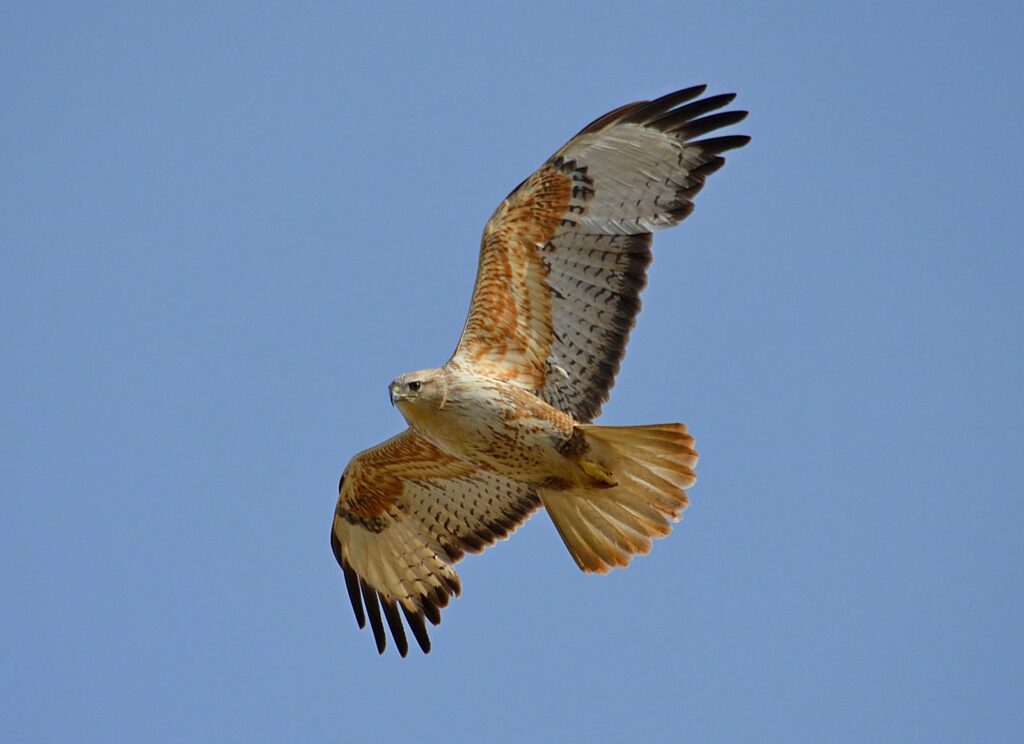by Joe Eaton
(Full article from RATS Tales July 2022)
A recent publication in the journal Biology Bulletin Reviews by E. V. Erofeeva and Anna Shubkina of the Severtsov Institute of Ecology and Evolution and J. E. Surkova of Moscow Pedagogical State University opens a rare window on anticoagulant rodenticide (AR) use and abuse in Russia. The paper documents that ARs used by farm operators, sometimes illegally, are killing non-target raptors and other wildlife. The authors’ main research focus has been predator-prey interactions; Shubkina says they became aware of rodenticide impacts on non-target wildlife through residents of remote fieldwork locales. Hunters, she says, are often “the first to notice the dead animals.”
The authors describe two incidents of apparent rodenticide poisoning of wildlife in farming areas of southern Russia. In 2019, a major die-off of brown hares about 200 miles from the city of Volgograd (formerly Stalingrad) was linked to rodenticide-laced grain distributed in farm fields. Twenty-three hares and a badger were found dead, and necropsies of the hares revealed internal bleeding consistent with AR poisoning. However, there was no toxicological analysis of either the dead animals or the grain. The badger, an omnivorous mammal, might have eaten the grain or scavenged a dead hare or vole.
The second incident, in early 2020 near the city of Krasnodar in the Kuban River watershed, claimed a wider range of victims. At least eleven species of birds and mammals were found dead in an area where poisoned grain had been distributed. Among them were rodent-eating Buteo hawks: eleven common buzzards, a Eurasian counterpart of the red-tailed hawk; four rough-legged buzzards, known as rough-legged hawks in North America; and two long-legged buzzards, open-country raptors similar to the ferruginous hawk. Two Eurasian kestrels, three short-eared owls, and two long-eared owls were also found dead, as were five Eurasian magpies and two Eurasian jays; the corvids may have preyed on living poisoned rodents or scavenged dead ones. Direct poisoning through grain consumption was presumed to have killed almost 3000 wood pigeons, 35 stock doves, and five hares.
Some of the dead birds and mammals were sent to a veterinary laboratory in the nearby city of Kropotkin (named for the 19th -century nobleman-turned-anarchist whose book Mutual Aid stressed the importance of cooperation in nature and in human history) for necropsies and toxicological analysis. Four species had residues of the second generation AR (SGAR) bromadiolone: long-eared owl, rough-legged buzzard (hawk), stock dove, and a vole. Each sample was tested six times, yielding a range of average values from .005 to .05 milligrams per gram. The vole, found in the stomach of a buzzard, had .09 milligrams per gram. The carcasses were kept in a freezer for more than six months before being tested, which may account for the low measured concentrations. Local authorities opened a criminal case against the distributors of the grain; legal action is still pending.
The article also notes an outbreak of human rodenticide poisoning in the Samara and Ulyanovsk regions in 2019, involving oil made from sunflower seed treated with an unspecified AR. According to the abstract for another journal article, three of the 80 people affected died.
Via email, Shubkina sent word of yet another case of mass wildlife poisoning, this one in the Russian-occupied Crimean peninsula. The victims were great bustards, a species listed as Vulnerable by the IUCN. (Bustards, odd landbirds native to Eurasia, Africa, and Australia, are related to cuckoos; male great bustards, weighing up to 39 pounds, are one of the heaviest flight-capable birds.) Up to 70 great bustards, a species listed as Vulnerable by the IUCN, were found dead in farm fields where grain treated with rodenticide had been distributed. Other details are sparse. In a Spanish population of great bustards, residues of the first-generation AR (FGAR) chlorophacinone have been found to be correlated with parasite and pathogen burdens.
The authors say that the Federal Service for Veterinary and Phytosanitary Supervision (Rosselkhoznadzor for short), the Russian agency responsible for monitoring the production and use of pesticides, was stripped of its regulatory authority sometime in the last decade “and the powers have not been transferred to another structure,” so for at least 9 years “the processing, sale, storage, and use of pesticides in the processing of fields has not been monitored in Russia.” Russian laws that prohibit scattering poisoned bait in farm fields appear to be frequently violated.
Shubkina explains that while rodenticides are subject to government regulation “in theory,” the concentrations of active ingredients are treated as trade secrets and are not made public. Rodenticides for household use can be purchased in stores or from on-line vendors, in multiple forms including blocks, pellets, and liquid solutions. “The main users of rodenticides are large multi-regional agricultural holdings,” she explained. Interest in less lethal alternatives is “suppressed by aggressive advertising.”
She describes public reaction to the poisoning episodes: “People are upset and angry and they do not know what to do…Everyone understands that it is unacceptable to destroy the animal world and endanger humans for the sake of food production, but food is necessary. Therefore, they would like to support a special study, but who will finance it?” Nonagricultural AR use doesn’t seem to be on anyone’s radar.
If RATS has a Russian counterpart, Shubkina isn’t aware of it. Environmental activism in Russia can be risky. According to a 2021 report from the Center for Strategic and International Studies, some grassroots actions are met with violence, civil penalties, or criminal prosecutions. The Russian Socio-Ecological Union tallied 169 episodes of repression in 2020 alone.


